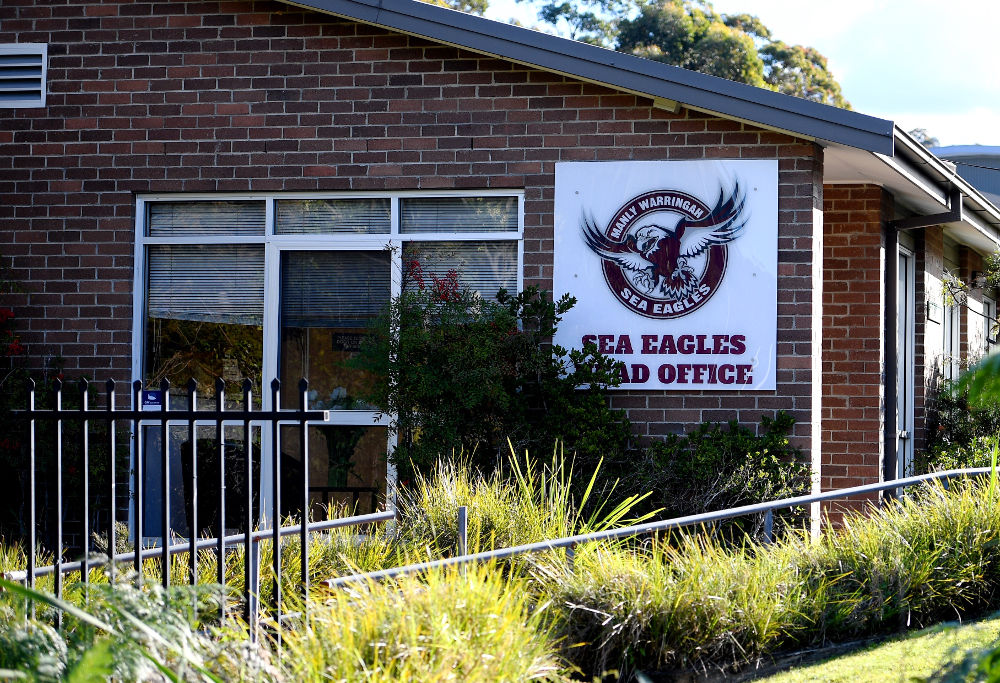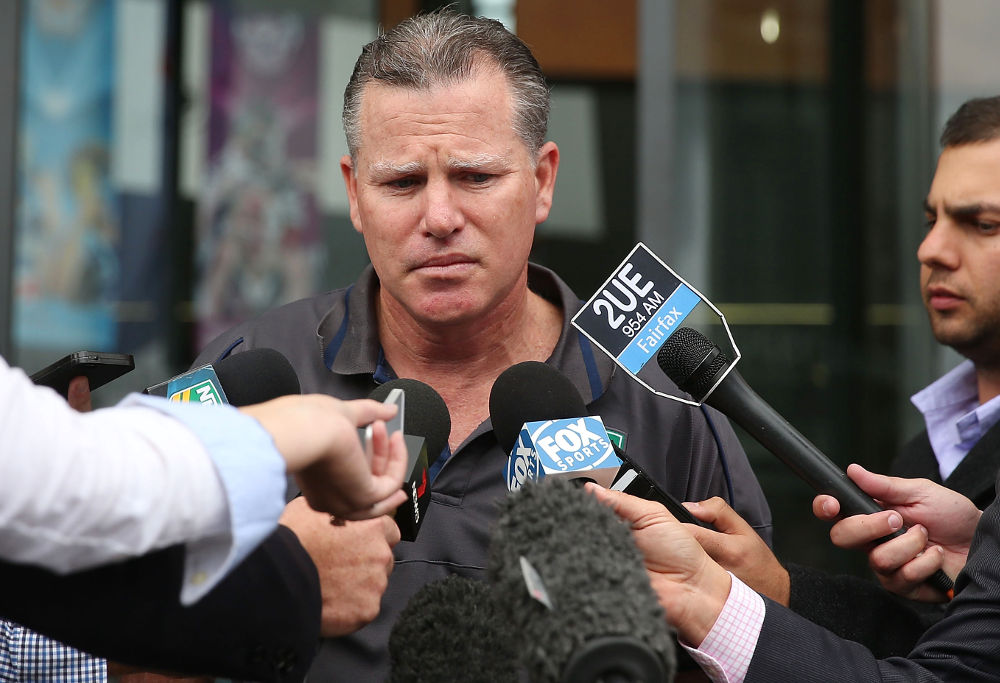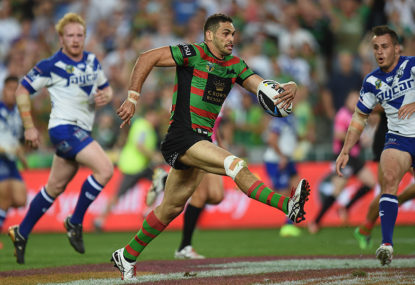This year marks two decades since the end of the Super League war, which ripped the game apart and threw away much of the massive support that had been so well developed through the 1980s and early ’90s.
Many fans were driven from the game because of the acrimonious and drawn-out battle that diluted the product, while dragging the game’s dirty laundry from the back rooms and out into full public view.
It was divisive. It was ugly.
In the past 20 years, rugby league has recovered. However, there are many issues that may well prove troublesome for those running the game.
If those at Rugby League Central had a wish list for 2018 – apart, of course, from a festival of superb football – it would probably look something like this.
1. State of Origin remains a massive success
The annual three-game series between New South Wales and Queensland is the jewel in the National Rugby League’s crown and their cash cow. This is in spite of Queensland completely dominating the series for over a decade, winning 11 of the last 12 series and 24 of the 36 games.
The popularity of the series is massive in spite of how lopsided it has been. The three matches are constantly in the top-ten most watched programs of the year and the stadiums are almost always near capacity. The powers that be will be banking on 2018 being no different.
All other tiers of the game are beholden to the behemoth that is Origin. This year, the Sydney game will be held on a Sunday night with no NRL matches played that weekend.

2. The dwindling crowds stop dwindling
The percentage of income made from Origin is disproportionate to the NRL proper. Take that income away – including the significant amount the free-to-air broadcaster pays for those three games – and it is unlikely the game would be in such great shape.
The crowds at NRL games are struggling, especially in comparison to those experienced by the AFL. That gulf got even wider in 2017.
| Year |
NRL average crowd |
AFL average crowd |
Difference |
| 2017 |
15,246 |
35,202 |
19,956 |
| 2016 |
16,063 |
33,190 |
17,127 |
| 2015 |
16,073 |
33,428 |
17,355 |
| 2014 |
16,798 |
33,684 |
16,886 |
| 2013 |
16,643 |
33,484 |
16,841 |
Bear in mind that the drop in NRL crowds from 2016 to 2017 actually amounts to 164,217 bums on seats during the season.
Vision of incredibly sparse turn-outs at the Sydney Olympic Stadium and the Sydney Football Stadium have shone a spotlight on dwindling crowds.
Using such huge grounds for club matches robs games of the atmosphere that attracts supporters and keeps them coming. Surely full Belmore, Kogarah and Leichhardt Ovals are better for the ongoing health of the game.
However, the Parramatta Eels – now based at the Olympic Stadium following the demolition of their stadium – have made a great play to combat the poor crowds at the massive stadium, dropping ticket and food prices significantly. Let’s hope it works.
A further challenge is the scheduling of Thursday night games and matches at 6pm on Friday evenings. The latter timeslot is difficult for fans to get to, as they have to battle with peak-hour traffic and take early marks from work.
The Thursday night slot is also difficult, especially for families, as they don’t end until 9:30pm, which is a late outing for a school night. That can be further compounded by city traffic. My experience is that Brisbane is home to one of the country’s worst road networks, meaning family from the outer suburbs might not get home until 11:30pm.
NRL HQ would really like it if the fans could find a way to overcome these obstacles and turn up to the grounds in increasing numbers.
3. A salary cap breach punishment for the Sea Eagles that doesn’t enrage Eels and Storm fans
When the news broke that the Sea Eagles had some serious salary cap issues at the end of last year, discussions of punishments filled social media. The boys from Brookvale don’t traditionally have that many friends or well-wishers, so some of the suggested punishments were unreasonably brutal.
However, the NRL will be expected to punish Manly in a way that is commensurate with the punishments handed out to the Eels in 2016 and the Storm in 2010, while still keeping the Sea Eagles competitive in 2018.

4. No examination of a lack of salary cap concessions for players injured on rep duty
Each year, players representing their state and country get badly injured. During the Rugby League World Cup just past, Canberra’s star hooker, Englishman Josh Hodgson, ruptured his ACL. The Raiders asked the NRL for some salary cap concessions to enable them to source a replacement but were bluntly rebuffed. Why this happened is unclear.
We have already seen clubs refusing to release players to the City-Country match, something that directly precipitated the game’s demise. Clubs have also refused to release players to play for minnow nations.
The NRL’s refusal to give leeway to clubs who lose a player while on representative duty will likely see this trend increase to the detriment of international rugby league – just when the likes of Tonga, Ireland and Papua New Guinea have started to become really competitive.
The NRL will be hoping no one examines their stance closely.
5. No examination of appointments at NRL HQ
While players can go to rugby union or overseas if they are unhappy with their conditions, our top referees have nowhere to go except the English Super League – which is less lucrative and involves uprooting their whole lives. They are hostage to the hierarchy that is imposed on them.
Referees that are treated well and fairly are the best referees as they are confident and secure in their roles. In the past, I questioned Tony Archer’s suitability in this regard.
We fans want the best referees. The question is whether the best hierarchy is in place to achieve this.
Just before Christmas, it was announced that Tony Archer’s ‘general manager – officiating’ role would now cover the entire national structure. This move upstairs saw Bernard Sutton promoted to the role of ‘senior manager – officiating’, with ex-coach Michael Maguire joining him as ‘high performance coach – officiating and leadership consultant’. Stalwart Robert Finch took the role of ‘senior manager – education, development and pathways’.
What is not clear is how any of these people got selected. Are they suitably qualified? Who has reviewed their experience and past performance, and compared it to other potential candidates? Was a process even run to consider other candidates for these roles? How much are they getting paid to do these jobs? Are all of these roles necessary? How do the referees themselves feel about these appointments? Will there be a public outing by officials past and present in regards to the refereeing hierarchy’s poor performance in recent years?
All issues the NRL are unlikely to want to come to the fore.

6. The Sydney AFL teams hit rough times
As the Super League war raged in 1995, the AFL seized the initiative and ploughed money into the beleaguered Sydney Swans, delivering star recruits Tony Lockett and Paul Roos to the club. Their resultant charge to the 1996 grand final saw multitudes jump on the Swans bandwagon and the AFL finally had a proper foothold in the biggest market in Australia.
It certainly wouldn’t hurt the NRL’s cause if the Sydney Swans and Greater Western Sydney Giants had a bad year or two. While GWS haven’t exactly captured the imagination of western Sydney so far, in spite of strong results, the AFL is determined that the venture will be a success.
Further, the Swans keep making the finals with monotonous regularity. If they could give that form a bit of a break it would be appreciated by NRL HQ. However, some have suggested that perhaps the NRL needs to urgently take a leaf out of the AFL’s book in regard to promoting the game among the kids, before it is too late!
[latest_videos_strip category=”rugby-league” name=”League”]
7. An all-Sydney grand final
While the majority of us loved the North Queensland Cowboys’ fairytale run to the 2017 grand final, the ticket sales for the match itself were poor relative to when Sydney teams feature.
In a superb move, the NRL gave the excess seats to junior players and their clubs. However, they won’t want to make that too much of an ongoing thing. If two well-supported Sydney sides could make the decider this year, it would really be appreciated.
































































































